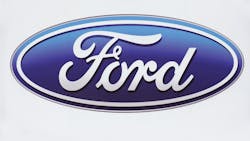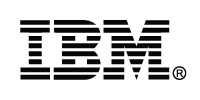Download this article in PDF format.
When Henry Ford introduced the moving assembly line in 1913, this “new way” of building automobiles turned the industry on its head. Cars that were taking 12+ hours to build were suddenly rolling off the assembly line in just 90 min. This made the Model T more affordable for everyday drivers, and the car’s mass production reshaped manufacturing worldwide.
For more than a century, this “one line, one car” method has been the backbone of how Ford builds vehicles. Now, the automotive giant is rewriting its own playbook. For its next generation of electric vehicles (EVs), the company is replacing the iconic linear line with what it calls an “assembly tree,” whereby three sub-assemblies are built in parallel and then joined together.
The shift over to this new assembly process helps speed up production and reduce complexity. “Instead of one long conveyor, three sub-assemblies run down their own lines simultaneously and then join together,” Ford explained in a recent announcement about the new production strategy. “Large single-piece aluminum unicastings replace dozens of smaller parts, enabling the front and rear of the vehicle to be assembled separately.”
Parts travel down the assembly tree to operators in a kit. Within that kit, all fasteners, scanners and power tools required for the job are included, and in the correct orientation for use. Ford says that the integration between the Ford Universal EV Production System and Platform means midsize electric truck assembly could be up to 40% faster than Louisville Assembly Plant’s current vehicles.
The company says some of that time will be reinvested into insourcing and automation to improve quality and cost, ultimately netting a 15% speed improvement. “We put our employees at the center and recreated the factory from scratch,” said Ford’s Bryce Currie, in the announcement.
“We live and breathe continuous improvement, but sometimes you need a dramatic leap forward,” Currie continued. “We expect ergonomic breakthroughs and complexity reduction—through elimination of parts, connectors and wire—will flow through to significant quality and cost wins.”
Getting Deeper into the EV Game
According to TechCrunch, the new EV factory will make mid-sized pickup trucks with a base price of $30,000. These models are slated to launch in 2027. It says the automaker’s willingness to shake up the century-old system that made Ford a household name reflects the “high-stakes juggling act of selling a line of affordable EVs that could be made in the United States faster, more efficiently, and with fewer parts, all while preserving profit margins.”
A change is definitely in order: TechCrunch says Ford’s EV division posted a loss of around $1.3 billion in the second quarter of 2025 and that sales of its top two EVs (the F-150 Lightning and the Mustang Mach-E) are both dropping. It also says Ford has developed a universal EV platform that will use lithium iron phosphate batteries using tech licensed from China’s CATL and manufactured at its new $3 billion BlueOval Battery Park factory in Michigan. That factory is expected to come online in 2026 and will employ 1,700 hourly workers.
Competing with the Best in the World
The Verge says Ford’s new universal production platforms will be “scalable and adaptive to a variety of vehicle types,” including trucks, vans and SUVs. The new EVs will have operating systems that can improve over time through over-the-air updates and the batteries will have lithium iron phosphate (LFP) chemistries that are more durable, faster charging and more affordable than its current lineup of EVs.
“The new vehicle platform and manufacturing process are the product of Ford’s three-year-old Silicon Valley-based ‘skunkworks’ project that the company empowered to throw out all the old processes and create something new from scratch,” The Verge reports.
“This is a bold and difficult undertaking to compete with the best in the world,” Doug Field, Ford’s chief EV, digital and design officer, said in a widely-reported briefing on the new development. “We started with a blank sheet to fight complexity and do something truly new.”
About the Author

Bridget McCrea
Contributing Writer | Supply Chain Connect
Bridget McCrea is a freelance writer who covers business and technology for various publications.






